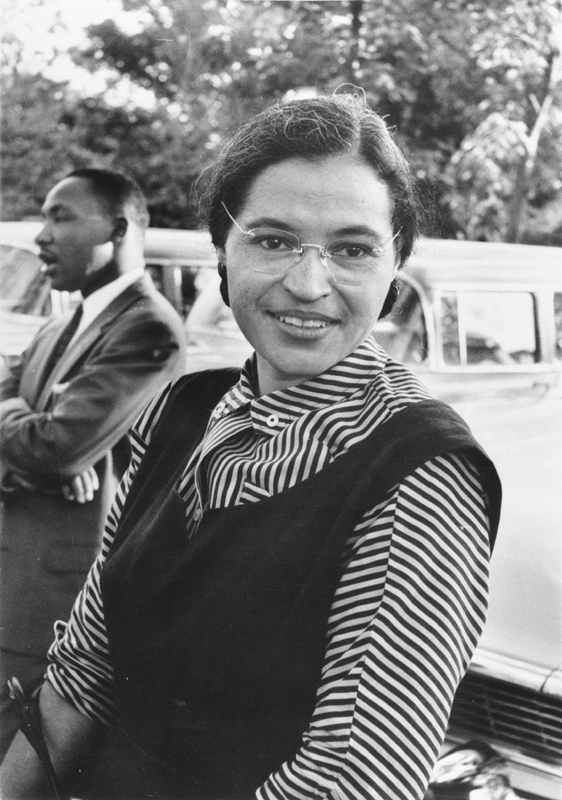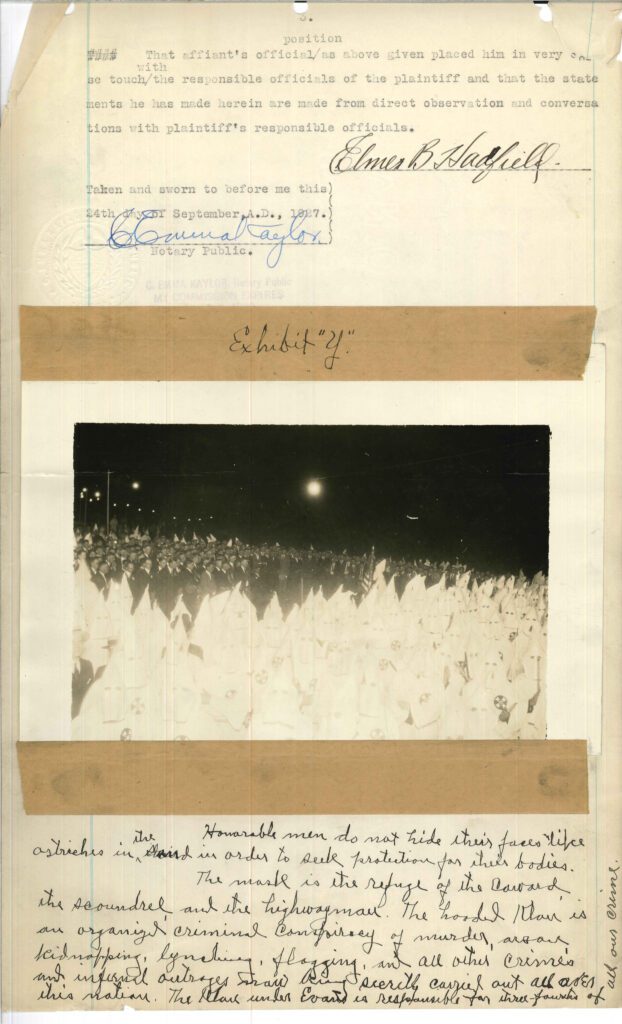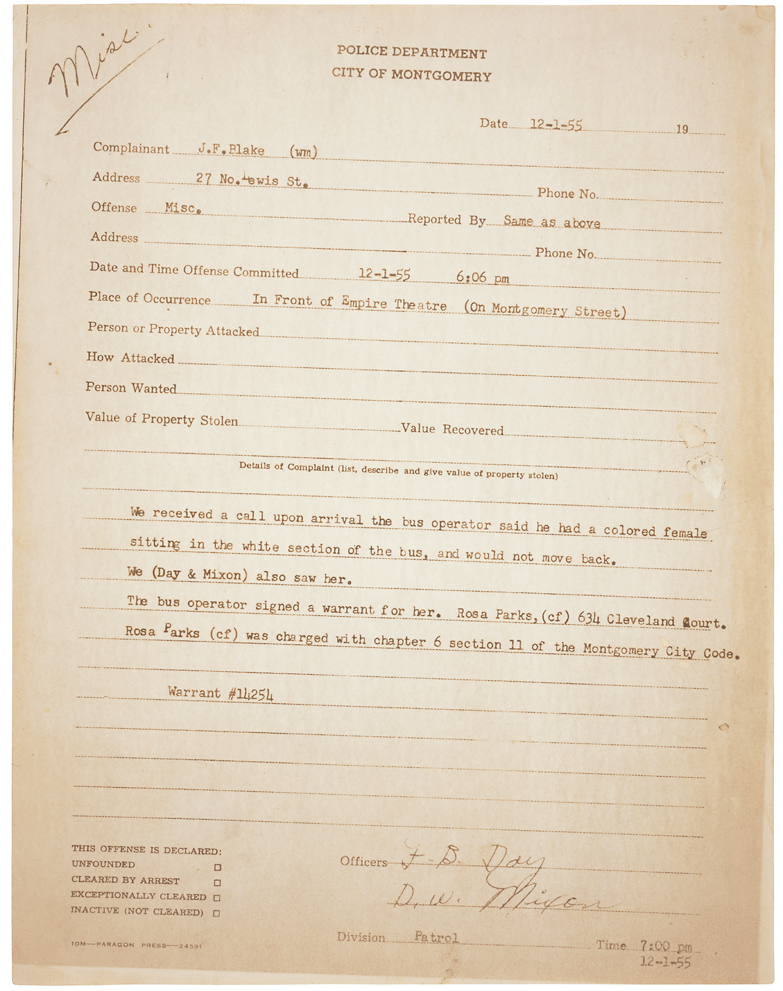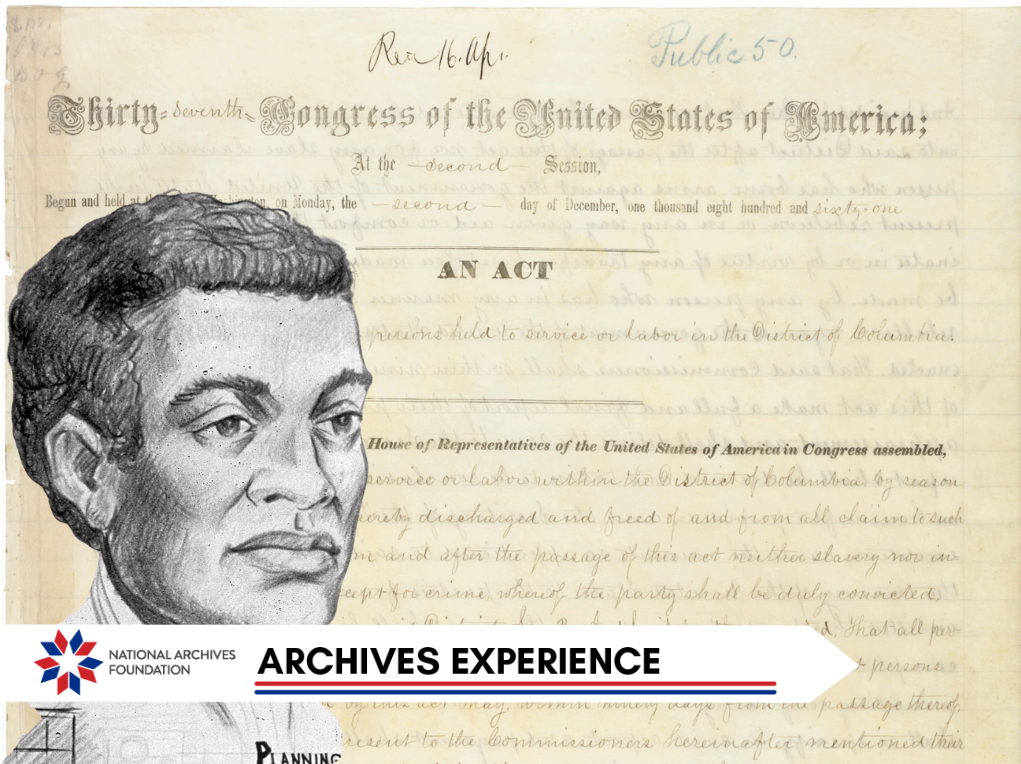Seated for Justice: Rosa Parks in the Archives
December 1 marked the 69th anniversary since the arrest of Rosa Parks, who boldly defied Jim Crow segregation on a Montgomery, Alabama bus. Beyond this brave and iconic act, this week we look at the life and impact of the “Mother of the Civil Rights Movement.”

Roots in Alabama
Rosa Louise Parks (née McCauley) was born in Tuskegee, Alabama in 1913. Her father worked as a carpenter, while her mother was a teacher. In her adolescence, she was a member of the African Methodist Episcopal Church, a denomination first founded by free African Americans in Philadelphia in the early 19th century. Her faith remained a steadfast, constant influence throughout her life.
While Parks grew up in predominantly African American communities in rural Alabama, she recounted being privy to the violent racism that was the hallmark of the Jim Crow south, including a Klu Klux Klan march in front of her grandfather’s home.

Planting the Seeds
While many remember Parks’ singular courage in the 1955 bus protest, she actually engaged in a long record of activism. Most notably, she was a long-time member of the National Association for the Advancement of Colored People (NAACP).
Rosa Parks’ involvement in civil rights advocacy began gradually, sparked in part by her husband. In 1932, she married Raymond Parks, a barber from Montgomery and a committed NAACP member. Raymond was especially involved in the defense of the “Scottsboro Boys,” a group of young Black men falsely accused of attacking two white women. Raymond’s work with the NAACP inspired Rosa to formally join the movement.

The Scottsboro Boys and Juanita E. Jackson of the NAACP, 1937
In addition to taking on various jobs, from housecleaning to working as a hospital aid, she completed her high school education in 1933, a remarkable achievement considering the Jim Crow-fueled barriers to African American education in the south. Then, Rosa’s formal involvement deepened in December 1943 when she joined the Montgomery chapter of the NAACP and was elected secretary. She served in the role until 1957.

View of the state capitol in Montgomery, c1946
As NAACP secretary, she was involved with two key cases involving grave injustices against Black women in Alabama: Recy Taylor and Gertrude Perkins. Parks also participated in the League of Women Voters, attending meetings with her husband.
Parks spent a brief time working at the Maxwell Air Force base in the early 1940s. She credited her time on the base as an inflection point in her activism since the base was desegregated. All public spaces as well as the on-base trolley were fully integrated, which would have been an unusual experience for Parks in otherwise segregated Montgomery.
In 1955, she became increasingly frustrated with the failure and inefficiency of the justice system, especially after the brutal murder of Emmett Till, a case that highlighted just how deeply entrenched bigotry had become, even in the eyes of the law.
“Sitting Down” for What’s Right
Now with NAACP experience under her belt, Parks felt more poised than ever to act in the name of racial justice. So on December 1, 1955, the 42-year-old refused to give up her seat on a segregated bus in Montgomery. Parks had not even been seated in the expressly white section. In fact, she was one row back. However, once the white section became filled, the bus driver demanded that she vacate her seat. When she did not comply, Parks was arrested.
Although she was not the first person to challenge this law, Parks’ involvement became an important symbol of resistance. Her act of defiance led to the Montgomery Bus Boycott, a coordinated protest that drew national attention to the fight against segregation, launching the careers of civil rights luminaries such as Martin Luther King Jr. Rosa Parks' resolve became a defining moment in the Civil Rights movement.
In 2021, the NAF was honored to host a virtual Q&A panel with Parks lawyer, attorney and Civil Rights icon Fred Gray. Watch and learn more here about Rosa Parks and the legacy of the bus boycott!
Related Content





